Beyond the Basics: Is Your Homeowners Policy Hiding More?
When you purchased your homeowners insurance policy, you likely focused on the core protections: coverage for the structure of your home against perils like fire, wind, or hail, and coverage for your personal belongings inside the house. These are undeniably the bedrock of a solid policy, providing essential financial security in the face of significant damage or loss. However, many homeowners are surprised to learn that their standard policy often extends protection far beyond these fundamental areas. Digging deeper into your coverage details can reveal a host of unexpected homeowners insurance coverage benefits that could save you from significant out-of-pocket expenses in various unforeseen situations.
It’s easy to think of homeowners insurance as purely property insurance – something that only kicks in when a tree falls on your roof or your couch is ruined in a fire. But modern policies are often designed with a broader scope, acknowledging the diverse risks homeowners face in their daily lives and even when away from home. Understanding these less obvious coverages is not just about being prepared for common disasters; it’s about unlocking the full value of your policy and ensuring you aren’t caught off guard by costs you assumed you’d have to bear yourself.
These hidden benefits aren’t typically advertised front and center, and they can vary significantly depending on your specific insurance carrier, the type of policy you have (like an HO-3 vs. an HO-5), and any endorsements you may have added. This is precisely why a thorough understanding, or a conversation with your insurance agent, is paramount. Failing to recognize these potential coverages could mean needlessly paying for damages or losses that your premium dollars are already designed to help cover. From damage occurring away from your property to certain types of damage within your home you might not expect to be covered, exploring the nuances of your policy can reveal a protective layer you didn’t know you had.
The standard homeowners policy is often a package policy, meaning it bundles together several different types of coverage. While dwelling and personal property coverage are the most commonly understood components, others like liability protection, additional living expenses (Loss of Use), and various specific endorsements contribute to a comprehensive safety net. It’s within these additional layers, and sometimes within the fine print of the standard coverages, that the unexpected homeowners insurance coverage benefits truly lie. Let’s delve into some of the more surprising ways your policy might offer protection, starting with how it handles your possessions when they’re not safely tucked inside your four walls.
Many homeowners focus solely on protecting items inside their home – furniture, electronics, clothing, and so forth. However, life happens outside the home too. You travel, your children go off to college, you take belongings with you on errands or vacations. What happens if something is damaged, lost, or stolen when it’s not physically located at your insured address? This is where the often-underappreciated off-premises personal property coverage comes into play, a key example of the unexpected homeowners insurance coverage benefits that can provide peace of mind no matter where your belongings are.
Considering the rising costs associated with homeownership and repairs, leveraging every aspect of your insurance policy is a smart financial move. Understanding these benefits can help you make informed decisions about filing claims (when appropriate and impactful, considering deductibles and claim frequency), budgeting for potential losses, and even evaluating whether your current coverage limits are sufficient for your lifestyle and assets. Don’t assume your policy is just for catastrophic events affecting the structure; its reach is often much wider, encompassing scenarios you might encounter more frequently than a house fire.
Surprising Coverage for Your Belongings Away From Home
One of the most beneficial, yet often overlooked, aspects of homeowners insurance is the coverage it provides for your personal property even when it’s not on your premises. This protection typically falls under the personal property section of your policy, often referred to as Coverage C. While the primary function is to cover items inside your dwelling, most standard policies extend a portion of this coverage – often a percentage like 10% of your total personal property limit – to items you take with you when you leave your home. This is a prime example of unexpected homeowners insurance coverage benefits that can be incredibly valuable.
Consider common scenarios where this coverage might apply. For instance, if you’re on vacation and personal items like luggage, clothing, or electronics are stolen from your hotel room or a rental car, your homeowners insurance policy might offer coverage, subject to your deductible and the specific terms and limits for off-premises coverage. This isn’t to say homeowners insurance replaces travel insurance entirely – travel insurance offers broader protection for trip cancellation, medical emergencies abroad, etc. – but for personal property loss, your homeowners policy can be a primary or secondary source of recovery.
Another frequent application of this off-premises coverage relates to your vehicle. While your auto insurance covers damage to your car and potentially items permanently installed in it (like a factory stereo), it typically does not cover personal property inside the car if it’s stolen or damaged. If someone breaks into your car and steals your laptop, purse, or golf clubs, you might assume you’re out of luck unless you have separate coverage. However, your homeowners policy’s off-premises personal property coverage can step in to help reimburse you for the value of those stolen items, often requiring evidence of forced entry.
This benefit is also particularly relevant for families with children attending college away from home. Personal property belonging to a student living in an on-campus dormitory is typically covered under the parents’ homeowners insurance policy. This means the student’s furniture, electronics, books, and other belongings in their dorm room are protected against covered perils like fire or theft, subject to the policy’s limits and deductible. This coverage usually applies only to dorm rooms, not off-campus apartments, for which the student would typically need their own renters insurance policy. This specific protection for college students is a notable element among the unexpected homeowners insurance coverage benefits many parents aren’t aware of.
Even less common scenarios, like personal items stolen or damaged while you’re participating in an activity – perhaps equipment taken from a gym locker (if forced entry is evident) or items lost during a move – could potentially be covered under this provision. The key is that the coverage follows your personal property, not just your home itself. It’s important to remember that high-value items, such as expensive jewelry, firearms, or fine art, may have sub-limits within your standard personal property coverage, both on and off premises. To adequately protect these items, you might need to add a scheduled personal property endorsement (sometimes called a floater) to your policy. This endorsement typically provides broader coverage, often including accidental loss, and may not be subject to the standard policy deductible.
Understanding the scope and limitations of your off-premises personal property coverage is crucial. Review your policy documents, specifically the sections detailing personal property coverage and any sub-limits that apply. Knowing these limits can help you decide if you need additional coverage for specific valuables or if you should consider separate insurance options for certain activities or property types. Don’t let the assumption that your insurance stops at your doorstep prevent you from filing a valid claim for a loss that occurred elsewhere – leveraging this aspect of unexpected homeowners insurance coverage benefits can make a real difference.
Liability Protection in Unexpected Situations
Beyond protecting your physical property, homeowners insurance provides a critical layer of protection known as personal liability coverage. This component is designed to protect you and your household members against financial loss if someone is injured on your property or if you accidentally cause damage to someone else’s property, and you are found legally responsible. While many homeowners understand this basic premise – for example, if a guest slips on your icy walkway – the scope of liability coverage often extends to more unexpected situations, highlighting further unexpected homeowners insurance coverage benefits.
One significant area of liability coverage relates to medical payments for guests. This part of the policy – often separate from the main liability coverage – can help pay for medical expenses for someone injured on your property, regardless of who was at fault. This is sometimes referred to as goodwill coverage because it can help cover minor medical bills quickly without a formal liability claim or determination of negligence. For example, if a friend trips over a rug and sprains an ankle while visiting, medical payments coverage could help cover their urgent care visit up to the policy’s specified limit (e.g., $1,000 or $5,000). This can prevent a small incident from escalating into a larger liability claim.
Another aspect of liability that can be surprising is coverage related to pets, particularly dogs. Standard homeowners insurance policies typically provide some level of coverage for injuries or property damage caused by your dog, such as a dog bite incident on or off your property. However, this coverage is not universal. Many insurance companies have specific exclusions for certain dog breeds they consider high-risk (like Pit Bulls, Rottweilers, German Shepherds, etc.), and some may deny coverage entirely if your dog has a history of biting or aggression. If your policy does cover dog bites, it falls under the personal liability section and is subject to your policy’s overall liability limits. This is an important point to discuss with your agent, especially if you own a breed that is frequently excluded.
Personal liability coverage can also extend to incidents that occur away from your home. If you accidentally cause property damage or bodily injury to someone while off your premises – for example, if your child breaks a neighbor’s window while playing ball, or you accidentally injure someone while biking – your homeowners liability coverage might apply. This ‘worldwide’ coverage aspect is another powerful, yet often underappreciated, element of the policy’s protection, contributing significantly to the unexpected homeowners insurance coverage benefits.
Furthermore, if a covered incident leads to a lawsuit against you, your homeowners liability coverage typically includes the cost of your legal defense. Attorney fees and court costs can quickly become substantial, even if you are ultimately found not liable. The policy’s commitment to providing a defense is a crucial financial protection, potentially saving you tens or even hundreds of thousands of dollars in legal expenses. This legal defense component is a vital part of the liability coverage and underscores its value beyond simply paying damages.
Understanding the breadth of your personal liability coverage is essential for protecting your assets. While the basic scenario of someone getting hurt on your property is well-known, the extension of this coverage to off-premises incidents, medical payments, and potential pet-related issues reveals a much wider safety net. Given the potential costs of liability claims and lawsuits, ensuring you have adequate liability limits is just as important as covering the physical structure of your home. Consider an umbrella policy for additional liability protection above and beyond your homeowners and auto policy limits if your assets warrant it.
Addressing the Unexpected: Hidden Homeowners Insurance Coverage Benefits
Beyond the common protections for your home and belongings, and the broad scope of liability coverage, homeowners insurance policies often contain specific provisions addressing less frequent, even peculiar, scenarios. These specific, or sometimes limited, coverages represent truly unexpected homeowners insurance coverage benefits that most policyholders are unaware they possess until a specific event occurs. Knowing about them beforehand can prevent confusion and potential out-of-pocket expenses.
One common example is coverage for spoiled food. If a covered peril, such as a severe storm leading to a power outage, causes the food in your refrigerator or freezer to spoil, your homeowners insurance may provide limited coverage for this loss. While typically subject to a relatively low sub-limit (perhaps a few hundred to a thousand dollars), this coverage can be helpful after an extended power interruption. It’s a small detail, but one that demonstrates the policy’s reach into mundane, yet costly, inconveniences resulting from covered events.
Mold damage is another area where homeowners often have questions. While standard policies do not cover mold damage caused by neglect or preventable issues (like a long-standing leak you failed to fix), they often provide limited coverage for mold that results from a covered peril. For instance, if a pipe bursts suddenly (a covered peril) and the resulting water damage leads to mold growth, the cost of mold remediation might be covered, subject to specific limits and deductibles. The key here is the cause of the mold – it must stem from a covered event. Understanding this distinction is crucial, as mold can be incredibly expensive to remediate. This specific area of coverage, or lack thereof depending on the cause, highlights why knowing the nuances of your policy is vital.
For homeowners running a small business out of their home, there might be a limited amount of coverage for business-related property and liability. Many standard policies provide a small amount of coverage (e.g., $2,500) for business equipment on the premises and an even smaller amount (e.g., $250) for business property off-premises. There might also be very limited business liability coverage. However, these limits are typically insufficient for any significant home-based business. If you operate a business from your home, you almost certainly need a separate business insurance policy or a specific home business endorsement added to your homeowners policy to ensure adequate protection for your business assets, inventory, and liability. Relying solely on the tiny sub-limits in a standard homeowners policy for your business is risky, but recognizing the existence of any coverage is still an unexpected homeowners insurance coverage benefits for those who weren’t aware.
An even more niche, but occasionally valuable, coverage involves grave markers. Some homeowners policies include a small amount of coverage (often $1,000 or $5,000) for damage to tombstones, grave markers, or urns belonging to the insured, particularly if the damage is caused by a covered peril like vandalism or a storm. While not a typical claim, it demonstrates the diverse risks a policy can address, stepping in to help with unexpected and often emotionally sensitive costs.
These specific examples – from spoiled food to grave markers – illustrate that homeowners insurance is not just about the big stuff. It can offer financial assistance for a range of smaller, yet potentially costly, issues that arise unexpectedly. The existence of these unexpected homeowners insurance coverage benefits underscores the importance of reviewing your policy thoroughly and discussing its details with your insurance agent. They can help you identify these lesser-known coverages and explain any limitations, sub-limits, or endorsements that might enhance or restrict them.
Being aware of these potential benefits allows you to make informed decisions about filing claims or addressing damages. While small claims might sometimes be best handled out-of-pocket to avoid potential premium increases, knowing that coverage exists provides options and prevents you from automatically assuming a cost isn’t covered. The cumulative value of these smaller, specific coverages can contribute significantly to the overall financial security provided by your homeowners insurance policy.
Unlocking Policy Details: What Your Declarations Page Reveals
Your homeowners insurance policy documents can seem daunting, filled with legal jargon and multiple sections. However, one page stands out as critically important and relatively easy to understand: the Declarations Page. This single document serves as a summary of your entire policy and is the key to quickly grasping the core aspects of your coverage, including potentially identifying unexpected homeowners insurance coverage benefits or understanding limitations that apply to them.
Think of the Declarations Page as your policy’s executive summary or snapshot. It clearly lists the insured’s name and address, the policy period (when the coverage is active), and the specific property being insured. Most importantly, it lays out the different types of coverage included in your policy (Dwelling, Other Structures, Personal Property, Loss of Use, Personal Liability, Medical Payments), and for each type, it specifies the financial limit of coverage. This is where you’ll find the maximum amount your insurer will pay out for a covered claim under each category.
Equally prominent on the Declarations Page is your deductible. This is the amount you must pay out-of-pocket for a covered loss before your insurance coverage kicks in. Understanding your deductible is vital, as it directly impacts when and if you might file a claim, especially for smaller losses that could potentially be covered under unexpected benefits like spoiled food or low-value personal property claims. Some policies might have different deductibles for different types of claims, such as a separate, often higher, deductible for windstorm or hurricane damage, which would also be noted here.
The Declarations Page also lists the premium you pay for the policy, either for the full term or broken down into installment amounts. Seeing the total premium in one place helps you understand the cost of the protection you’re receiving. Furthermore, it will include contact information for your insurance agent or the insurance carrier itself, making it easy to reach out with questions about your coverage or to report a claim.
Beyond these fundamental details, the Declarations Page often contains information about specific endorsements or riders that have been added to your policy. Endorsements modify the standard coverage, either adding specific protections (like scheduled personal property coverage for jewelry) or sometimes restricting coverage. If you’ve added any specific coverage for items like a home business or unique valuables, details about these endorsements and their limits are often summarized on the Declarations Page or clearly referenced. Reviewing this section can sometimes reveal unexpected homeowners insurance coverage benefits you specifically opted for but may have forgotten about.
Moreover, the Declarations Page may contain important disclosures, disclaimers, or notices about changes to the policy or specific provisions that affect your rights or responsibilities. For instance, it might note an automatic increase in dwelling coverage to keep pace with inflation or construction costs, or it might mention specific conditions related to your coverage. Some policies might also highlight options you have, such as potentially opting out of certain automatic policy adjustments, like an automatic deductible increase.
In essence, the Declarations Page is your most accessible resource for understanding the core parameters of your homeowners insurance. Before a loss occurs, take the time to locate this page and review it carefully. Familiarize yourself with your coverage limits, deductibles, and any listed endorsements. This proactive step is crucial for knowing what your policy is designed to protect and for identifying the potential unexpected homeowners insurance coverage benefits that apply to your specific situation. If anything is unclear, or if you want to understand the full details behind a summary point, contact your agent for clarification.
Smart Moves to Lower Your Homeowners Insurance Premium
While discovering unexpected homeowners insurance coverage benefits adds significant value to your policy, managing the cost of that coverage is also a primary concern for many homeowners. Fortunately, there are several proactive steps you can take to potentially lower your homeowners insurance premium without necessarily sacrificing essential protection. Implementing these strategies can help make comprehensive coverage, including those valuable hidden benefits, more affordable.
One of the most common ways to reduce your premium is by increasing your deductible. The deductible is the amount you pay out-of-pocket before your insurance coverage begins for a claim. Opting for a higher deductible – for example, increasing it from $500 to $1,000 or even $2,500 – signals to the insurer that you will cover a larger portion of smaller losses yourself. This can significantly lower your premium because it reduces the likelihood of the insurance company paying out on minor claims. While this means you’ll pay more upfront if you do have a covered loss, it can lead to substantial savings on your annual premium. The decision depends on your financial comfort level with covering a larger deductible in an emergency.
Another highly effective strategy is bundling your insurance policies. Many insurance carriers that offer homeowners insurance also offer auto insurance. By purchasing both your home and auto insurance from the same company, you can often qualify for a multi-policy discount, which can range anywhere from 5% to 20% or even more off your total premium. This is a simple way to save money while consolidating your insurance needs with a single provider.
Simply inquiring about available discounts with your insurance agent can also yield savings. Insurers offer a variety of discounts that policyholders may not be aware of. These can include discounts for: Home security systems: Installing a monitored burglar or fire alarm system can lead to discounts, as it reduces the risk of theft or significant fire damage. Safety features: Smoke detectors, carbon monoxide detectors, fire extinguishers, and sprinkler systems can also contribute to discounts. Updated home systems: Replacing older roofs, plumbing, or electrical systems can make your home safer and less prone to claims, potentially lowering your premium. Non-smokers: If all residents in your household are non-smokers, you might qualify for a discount due to the reduced risk of fire.
The construction materials of your home can also influence your premium. Homes built with materials that are more resistant to perils common in your area – for instance, a brick home in areas prone to high winds or fire – may qualify for lower rates because they pose less risk to the insurer. Location-specific risks, such as proximity to a fire station or hydrant, can also play a role in pricing.
Maintaining a good credit score is another factor that insurance companies in many states use to price insurance policies (where permitted by law). A strong credit history is often correlated with responsible financial behavior, which insurers may view as an indicator of lower risk. While rebuilding credit takes time, understanding its impact can motivate steps towards improving it.
Finally, for older homeowners, some insurers offer discounts to individuals aged 55 or older, particularly if they are retired and spending more time at home. This ‘senior discount’ acknowledges that someone is more likely to be present to detect and respond to potential issues quickly, reducing the severity of potential claims.
By actively exploring these various options and discussing them with your insurance agent, you can work towards reducing your homeowners insurance costs. Saving on your premium allows you to maintain essential coverage, including accessing the valuable unexpected homeowners insurance coverage benefits, without overburdening your budget.
It’s worth noting that while focusing on lowering costs is important, it should never come at the expense of adequate coverage. Ensure that any adjustments you make, such as increasing your deductible, align with your financial capacity to absorb a loss. The goal is to find the right balance between affordability and comprehensive protection.
Don’t Leave Money on the Table: Review Your Policy Today
In the intricate world of insurance, it’s easy to overlook the finer details of your policy, focusing only on the most prominent aspects like dwelling coverage and deductible. However, as we’ve explored, standard homeowners insurance policies often contain a wealth of unexpected homeowners insurance coverage benefits that can provide crucial financial protection in scenarios you might not have anticipated. From protecting your personal property away from home to offering liability coverage for guests or even handling niche losses like spoiled food, these hidden benefits add significant value to your policy.
The mistake many homeowners make is assuming their policy only covers catastrophic damage to the structure or contents within the home. This limited view can lead to unnecessary out-of-pocket expenses for losses that could have been covered. Whether it’s personal items stolen from your car while shopping, damage to your child’s property in a college dorm room, medical bills for a guest injured on your property, or even specific issues like mold remediation caused by a covered event, knowing the full scope of your coverage is empowering.
The key to unlocking these benefits and understanding your policy’s full potential lies in proactive engagement. Simply paying your premium each year without reviewing your coverage is like owning a complex tool but only using its most basic function. Your Declarations Page is the first place to start, offering a concise summary of your coverage types, limits, and deductibles. However, delving deeper into the full policy document, or better yet, consulting with your insurance agent, provides a comprehensive understanding of the terms, conditions, exclusions, and specific endorsements that shape your protection.
Think about scenarios you’ve encountered or might encounter in the future. Does your teenager drive your car occasionally and park it at school? Does your college student live in a dorm? Do you frequently travel with valuable electronics? Do you own a pet? Have you considered the potential liability if someone were injured during a gathering at your home or even off-site if your actions caused harm? Each of these situations touches upon the unexpected homeowners insurance coverage benefits discussed, demonstrating their real-world relevance.
Beyond understanding what’s covered, reviewing your policy regularly allows you to ensure your coverage limits are still adequate for your current assets and lifestyle. It also presents an opportunity to discuss potential discounts you may now qualify for or to make strategic decisions about your deductible to manage your premium costs effectively. Bundling policies, improving home security, or even simply informing your agent about life changes like quitting smoking could lead to significant savings.
Don’t wait until a loss occurs to find out what your insurance policy actually covers. Take the initiative today to review your policy documents, particularly the Declarations Page. Make a list of questions about specific scenarios or coverages you’re unsure about. Then, schedule a meeting or call with your insurance agent. They are your expert resource, equipped to explain the nuances of your policy, highlight the unexpected homeowners insurance coverage benefits relevant to your situation, and help you make informed decisions about your coverage. An annual coverage review with your agent is a smart practice to ensure your policy keeps pace with your changing needs and to maximize the value of your insurance investment.
In conclusion, homeowners insurance is a vital financial tool, offering protection that often extends far beyond the obvious. By understanding and leveraging the unexpected homeowners insurance coverage benefits hidden within your policy, you can enhance your financial security and avoid unwelcome surprises when a covered loss occurs. Make the effort to know your policy – it’s your protection, and understanding it fully ensures you’re not leaving valuable benefits on the table.
For more information about homeowners insurance and how it can protect you, consult resources like the National Association of Insurance Commissioners (NAIC) or the Insurance Information Institute. And always remember to discuss your specific policy details with your trusted insurance professional.
Have questions? Contact us here.






